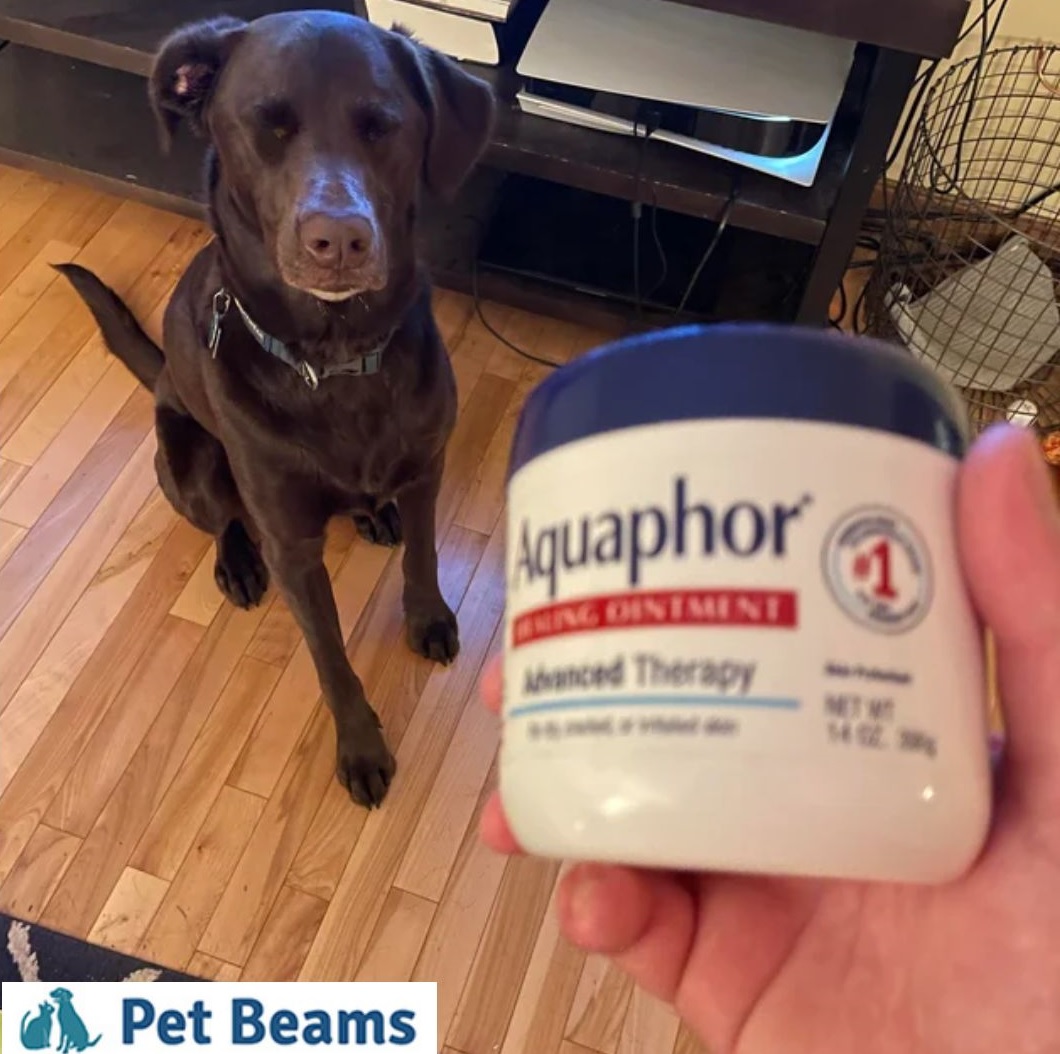Introduction
Dogs are known for their inquisitive nature, often exploring the world around them with their mouths. Occasionally, this curiosity can lead to unexpected situations, such as your dog ingesting substances they shouldn’t. If you’ve found yourself in the unsettling situation of discovering that your dog has eaten Aquaphor, it’s crucial to remain calm and informed. In this comprehensive guide, we’ll delve into the potential risks associated with dogs consuming Aquaphor, what you should do in such situations, and how to prevent similar incidents in the future.
Understanding Aquaphor
Before we delve into the specifics of how Aquaphor might affect your dog, let’s take a closer look at the product itself.
What is Aquaphor?
Aquaphor is a widely used skincare product renowned for its moisturizing and protective properties. It’s commonly employed to alleviate dry or irritated skin and contains a mixture of ingredients, with the primary ones being:

Petrolatum: This is a semi-solid mixture derived from petroleum. It forms a protective barrier on the skin, helping to lock in moisture.
Mineral Oil: Mineral oil is a colorless and odorless oil that also aids in moisturizing and protecting the skin.
Lanolin Alcohol: Lanolin is a waxy substance obtained from the wool of sheep. It’s well-known for its ability to moisturize and soften the skin, thanks to its emollient properties
Glycerin: Glycerin is a humectant, meaning it helps retain moisture. It’s commonly used in skincare products to prevent dryness.
Bisabolol: is a compound naturally occurring in chamomile flowers. It’s famous for its soothing and anti-inflammatory qualities, which is why chamomile is often used to help with skin issues like eczema and dermatitis.
Panthenol: Panthenol is a form of vitamin B5 and is used for its moisturizing and skin-protecting qualities.
My Dog Ate Aquaphor: What Should I Be Concerned About?
The first step when dealing with a situation where your dog has ingested Aquaphor is to assess the potential risks involved.
- Quantity Consumed: The severity of the situation largely depends on the amount of Aquaphor your dog has ingested. A small lick or a tiny amount is less likely to cause harm than a large ingestion.
- Ingredients: Check the product label to see what your dog has ingested. The ingredients in Aquaphor are generally safe for humans, but they can be harmful to dogs.

Potential Risks Associated with Dogs Ate Aquaphor:
- Gastrointestinal Upset: Dogs that ingest Aquaphor may experience gastrointestinal issues such as vomiting, diarrhea, or stomach discomfort. These symptoms are common reactions to the introduction of unfamiliar substances in their system.
- Pancreatitis: Some dogs may be more sensitive to certain ingredients, particularly fats and oils. In rare cases, the ingestion of a significant amount of Aquaphor could trigger pancreatitis, which is an inflammation of the pancreas. This condition can be serious and requires immediate veterinary attention.
- Skin and Coat Issues: In some cases, excessive consumption might lead to skin and coat issues, although these are less common.
- Other Concerns: Depending on the specific formulation of the Aquaphor product and any additives it may contain, there could be other potential risks. Always consult with a veterinarian for guidance tailored to your dog’s individual circumstances.

What Should You Do If Your Dog Ate Aquaphor?
Discovering that your dog has consumed Aquaphor can be distressing, but taking the right steps promptly can make a significant difference in ensuring your furry friend’s well-being.
- Stay Calm: The first and most crucial step is to remain calm. Panicking can make the situation more stressful for both you and your dog.
- Assess the Situation: Try to determine the quantity of Aquaphor your dog has ingested. If it’s a tiny amount, the risk of severe complications is generally lower.
- Read the Label: Examine the product label to understand what ingredients are in the specific Aquaphor product your dog has consumed. This information can be valuable when you consult with a veterinarian.
- Contact Your Veterinarian: Regardless of the quantity ingested, it’s advisable to get in touch with your veterinarian. Share the details of the situation, including the product name, its ingredients, and the estimated amount your dog consumed. Your vet can provide professional guidance based on your dog’s size, the ingredients ingested, and the potential risks involved. They may recommend monitoring your dog at home or seeking immediate medical attention.

- Observe Your Dog: Keep a close eye on your dog for any unusual symptoms. Common signs of gastrointestinal distress in dogs include vomiting, diarrhea, excessive drooling, and stomach discomfort. If these symptoms persist, worsen, or if you notice any other concerning changes in your dog’s behavior or health, contact your vet immediately.
- Prevent Future Incidents: To avoid similar situations in the future, take preventative measures. Store household products, including skincare items like Aquaphor, out of your dog’s reach.
Conclusion
Discovering that your dog has ingested Aquaphor can be a source of worry, but with knowledge and swift action, you can ensure their safety and well-being. The severity of the situation largely depends on the quantity consumed and your dog’s individual sensitivities. Always consult with your veterinarian for professional advice tailored to your specific circumstances. By staying informed, staying calm, and taking preventative measures, you can help keep your furry friend out of potentially risky situations and enjoy a happy and healthy life together.


4 thoughts on “My Dog Ate Aquaphor: Understanding the Risks and Taking Action”